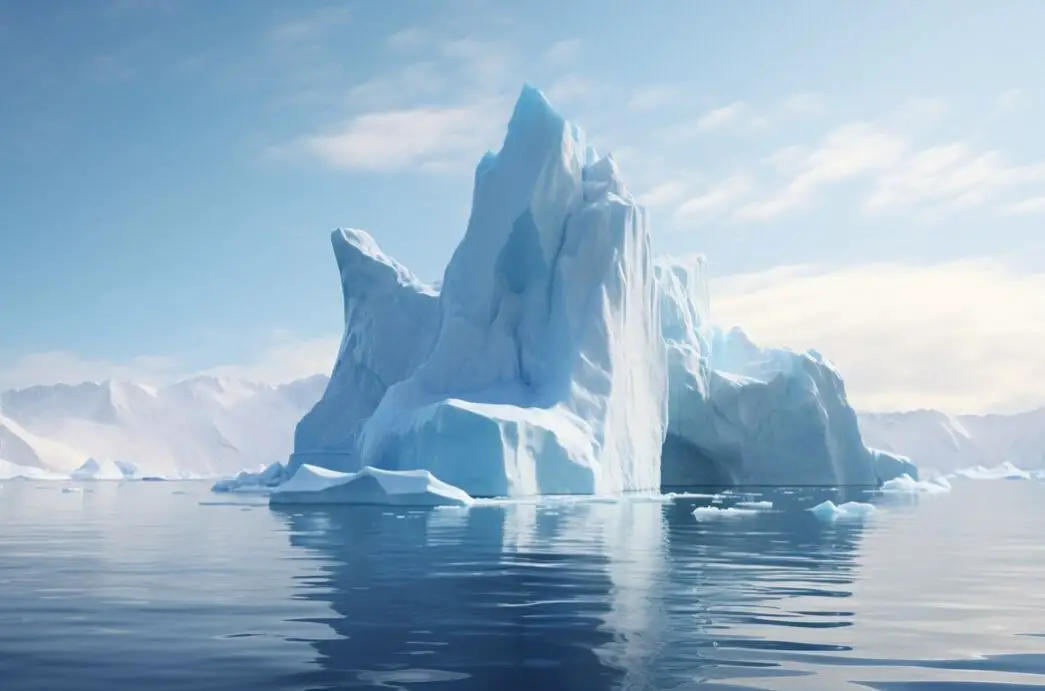What Are 3 Facts About Antarctica?

Antarctica, the icy giant at the bottom of the Earth, is shrouded in mystery and wonder. It’s a place where nature showcases its most extreme facets.
In this article, we’ll delve into three remarkable facts about Antarctica that will leave you awe-inspired. But before we do, let’s summarize these facts in a table for a quick overview:
| Fact | Description |
|---|---|
| Driest Continent | Antarctica receives less precipitation than the Sahara Desert, with an average annual precipitation of just 2 inches. Some areas, like the McMurdo Dry Valleys, have seen less than 10 inches in the past 2 million years! |
| Windiest Continent | The winds in Antarctica can reach astonishing speeds of over 200 miles per hour. These powerful winds are caused by the temperature difference between the cold interior and the warmer ocean, and they’re further intensified by the presence of the Transantarctic Mountains. |
| Largest Ice Sheet on Earth | Antarctica is home to the largest ice sheet on our planet. Some parts of this icy behemoth are up to 2.5 miles thick, and it contains an astounding 70% of the world’s fresh water. The ice sheet forms over millions of years as snow accumulates and compacts under its weight, continuously flowing towards the coast and breaking off into colossal icebergs. |
Now, let’s explore each of these facts in more detail:
Fact 1: Antarctica is the Driest Continent on Earth
Imagine a place drier than the Sahara Desert! That’s Antarctica for you. The astonishing fact is that Antarctica receives less annual precipitation than the world’s most famous desert. Why is that, you might ask? Well, it all comes down to the frigid air that envelops this continent.
The Cold Air Conundrum
Antarctica’s bone-chilling temperatures make it a land of superlatives. The air here is so cold that it can’t hold much moisture. As a result, the average annual precipitation in Antarctica is a mere 2 inches. To put that into perspective, some deserts on Earth get more rain than this icy wasteland.
The McMurdo Dry Valleys
To further boggle your mind, consider the McMurdo Dry Valleys, one of the driest spots on the planet. These valleys have experienced such arid conditions that they’ve seen less than 10 inches of precipitation in the past 2 million years! It’s a stark reminder of just how extreme Antarctica can be.
Fact 2: Antarctica is the Windiest Continent on Earth
Hold onto your hats because Antarctica is not only the driest but also the windiest continent on Earth. The winds here can achieve mind-boggling speeds that would put even the fiercest hurricanes to shame.
The Temperature Differential
So, what’s causing these furious winds? It all comes down to temperature differences. Antarctica’s interior is brutally cold, while the surrounding ocean is relatively warmer. The cold air from the continent’s heart rushes down towards the coast, creating a powerful flow of air.
The Transantarctic Mountains
But that’s not all. The Transantarctic Mountains, a formidable natural barrier that runs across Antarctica, act as wind accelerators. These mountains force the air to flow even faster, resulting in wind speeds that can exceed 200 miles per hour! It’s a natural force of unparalleled strength.
Fact 3: Antarctica is Home to the Largest Ice Sheet on Earth
If you think of ice, think big. Antarctica is the heavyweight champion when it comes to ice. It boasts the most massive ice sheet on the planet, and the numbers associated with it are staggering.
The Antarctic Ice Sheet
Picture an ice sheet so colossal that it can reach thicknesses of up to 2.5 miles in some places. This vast expanse of ice contains a mind-boggling 70% of the world’s fresh water. But how does it form?
The Formation of the Ice Sheet
The Antarctic ice sheet is a product of millennia. Snowfall in this region accumulates over millions of years, and the weight of the snow compresses it into ice. The result? A colossal ice sheet that is constantly on the move.
Flowing Towards the Coast
This mammoth ice sheet doesn’t stay put; it’s in a perpetual state of motion. It slowly flows towards the coast, where it eventually breaks off into massive icebergs. These icebergs are so enormous that they can span hundreds of square miles.
FAQs
Are there any living creatures in Antarctica? Yes, despite its harsh conditions, Antarctica is home to a range of remarkable animals like penguins, seals, and various species of birds.
Are there research stations in Antarctica? Yes, several countries operate research stations in Antarctica to study its unique environment and its impact on global climate systems.
Is tourism possible in Antarctica? Yes, but it’s heavily regulated to protect the fragile ecosystem. Visitors can experience the breathtaking landscapes and wildlife on carefully guided tours.
Conclusion
Antarctica, with its extreme dryness, ferocious winds, and colossal ice sheet, is a world of superlatives. It challenges our understanding of what our planet is capable of, serving as a testament to the awe-inspiring power of nature.
This icy continent not only fascinates scientists but also captures the imaginations of adventurers and explorers. As we continue to unravel its mysteries, Antarctica remains a symbol of the remarkable and unfathomable beauty of our planet.
RELATED: What’s in the Antarctic: A Frozen Wonderland of Surprises!
